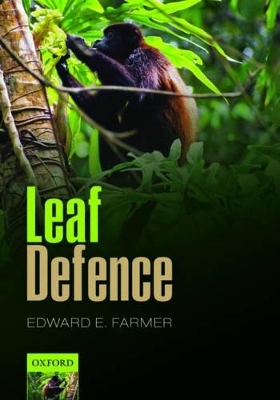
Leaf Defence
Oxford University Press (Verlag)
978-0-19-877783-0 (ISBN)
Leaves are among the most abundant organs on earth and are a defining feature of most terrestrial ecosystems. However, a leaf is also a potential meal for a hungry animal and the question therefore arises, why does so much foliage survive in nature? What mechanisms protect leaves so that, on a global scale, only a relatively small proportion of living leaf material is consumed? Leaf survival is in large part due to two processes: firstly, leaf-eating organisms fall prey to predators (top-down pressure on the herbivore); secondly, leaves defend themselves (bottom-up pressure on the herbivore). Remarkably, these two types of event are often linked; they are controlled and coordinated by plants and the molecular mechanisms that underlie this are now beginning to emerge.
This novel text focuses exclusively on the leaf, on the herbivorous organisms that attack leaves, and the mechanisms that plants use to defend these vital organs. It begins with an assessment of the scale of herbivory, before examining direct physical and chemical defences on leaf surfaces and within the leaf itself. Although some leaf defences are easily seen, most operate at the molecular level and are therefore invisible to the naked eye. Many of these recently elucidated mechanisms are described. Throughout the book, perspectives from both the laboratory and the field are combined. A central feature of the work is its emphasis on the coevolution of leaf defences and the digestive tracts of animals including humans, making the book of relevance in understanding the role of leaf defences in agriculture.
Leaf Defence is suitable for senior undergraduate and graduate students taking courses in plant science, as well as a broader audience of biologists and biochemists seeking a comprehensive and authoritative overview of this exciting and emerging topic.
Edward E. Farmer a is professor in the Department of Plant Molecular Biology at the University of Lausanne where he leads an international research team focussed on understanding leaf defence mechanisms. His work has led to the discovery of mechanisms that allow leaves to respond to attack and also allow damaged tissues communicate their health status to other parts of the plant. Professor Farmer has travelled widely to study the defence features of plants in tropical, desert and mountain habitats and has also focussed attention on the often unique defence features of island floras.
1. Introduction: The leaf and the pressures it faces ; 2. Leaf colour patterning and leaf form ; 3. Structural defences and specialised defence cells ; 4. Chemical defences ; 5. Inducible defences and the jasmonate pathway ; 6. Top-down pressures and indirect defences ; 7. Release and escape from herbivory ; 8. Escape in space : The cliff trees of Socotra
| Erscheinungsdatum | 31.01.2016 |
|---|---|
| Verlagsort | Oxford |
| Sprache | englisch |
| Maße | 169 x 242 mm |
| Gewicht | 404 g |
| Themenwelt | Naturwissenschaften ► Biologie ► Biochemie |
| Naturwissenschaften ► Biologie ► Botanik | |
| Naturwissenschaften ► Biologie ► Zellbiologie | |
| ISBN-10 | 0-19-877783-3 / 0198777833 |
| ISBN-13 | 978-0-19-877783-0 / 9780198777830 |
| Zustand | Neuware |
| Informationen gemäß Produktsicherheitsverordnung (GPSR) | |
| Haben Sie eine Frage zum Produkt? |
aus dem Bereich


